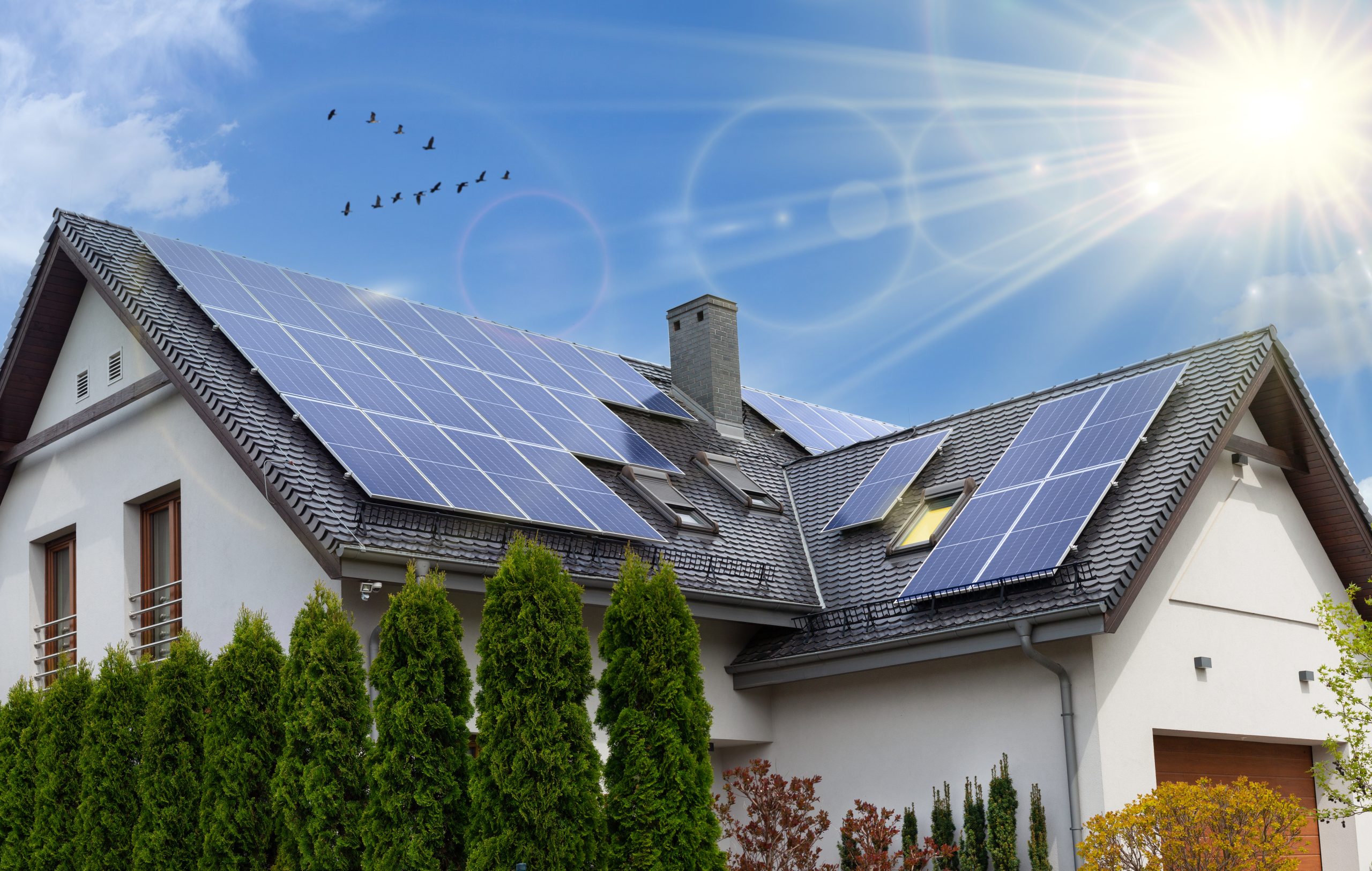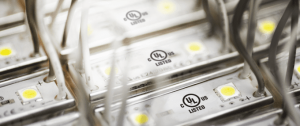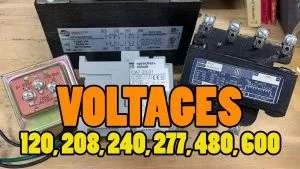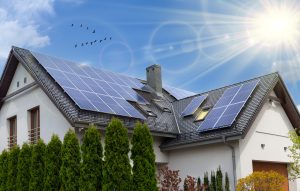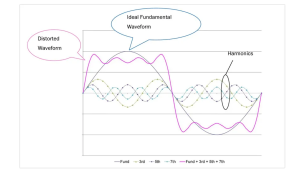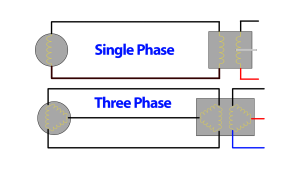How Does Solar Energy Work?
In today’s world, solar energy is becoming an increasingly important topic for electricians. As the demand for renewable energy solutions rises, understanding the fundamentals of solar energy and its application in electrical systems is essential for professionals in the trade. This article will provide an in-depth look into how solar energy works, the components involved, and the critical role electricians play in implementing solar energy systems.
What Is Solar Energy?
Solar energy is the power harnessed from the sun’s radiant energy. It is a renewable and sustainable source of energy, converted into usable electrical power using photovoltaic (PV) technology or thermal energy for heating applications. The sun emits electromagnetic radiation, which reaches the Earth in the form of sunlight. This sunlight contains energy-rich photons that can be captured and converted into electricity or heat.
For electricians, the focus is on the electrical energy derived from sunlight, primarily through photovoltaic systems, which are the backbone of modern solar installations.
The Basics of Photovoltaic Systems
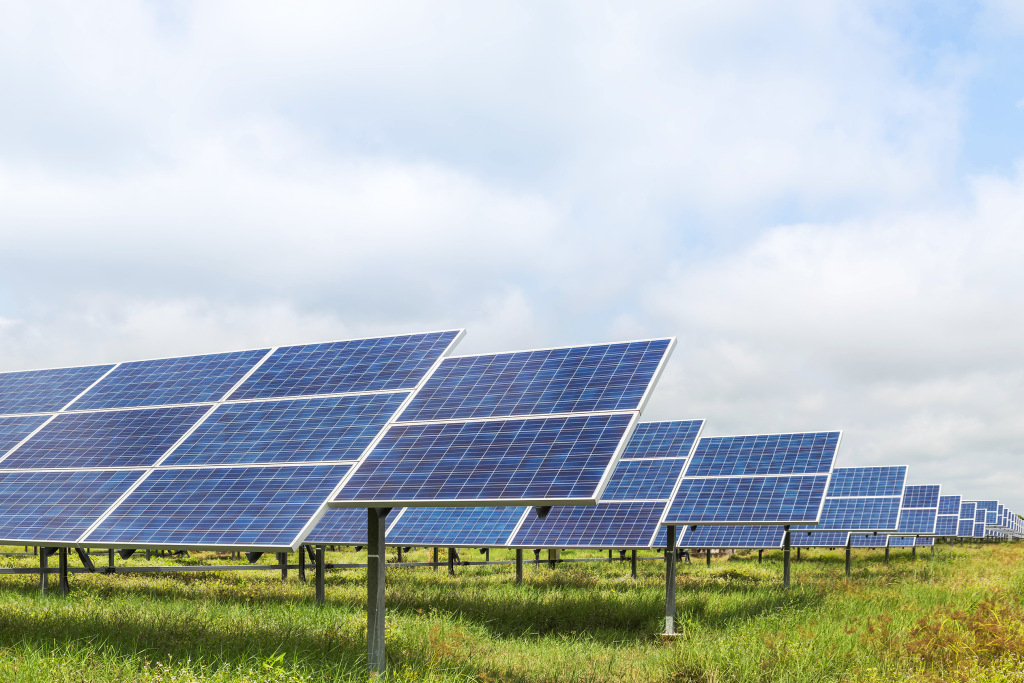
Photovoltaic Effect
The photovoltaic (PV) effect is the process through which solar cells convert sunlight into electricity. When photons from sunlight strike the surface of a solar cell, they transfer energy to electrons within the material, typically silicon. This energy excites the electrons, allowing them to break free from their atomic bonds and flow through the material, creating an electric current.
Key Components of a Solar PV System
A solar PV system is composed of several critical components, each playing a specific role in generating and managing electricity:
- Solar Panels: Arrays of solar cells that capture sunlight and convert it into direct current (DC) electricity.
- Inverters: Convert the DC electricity generated by solar panels into alternating current (AC) electricity, which is used by most electrical devices and systems.
- Mounting Systems: Secure the solar panels in place, often on rooftops, poles, or ground-based racking systems, ensuring optimal exposure to sunlight.
- Battery Storage (Optional): Stores excess energy generated during peak sunlight hours for later use, particularly in off-grid systems or for backup power.
- Electrical Wiring and Disconnects: Facilitate the safe and efficient transfer of electricity throughout the system.
- Monitoring Systems: Track the performance of the solar system and provide data on energy production and consumption.
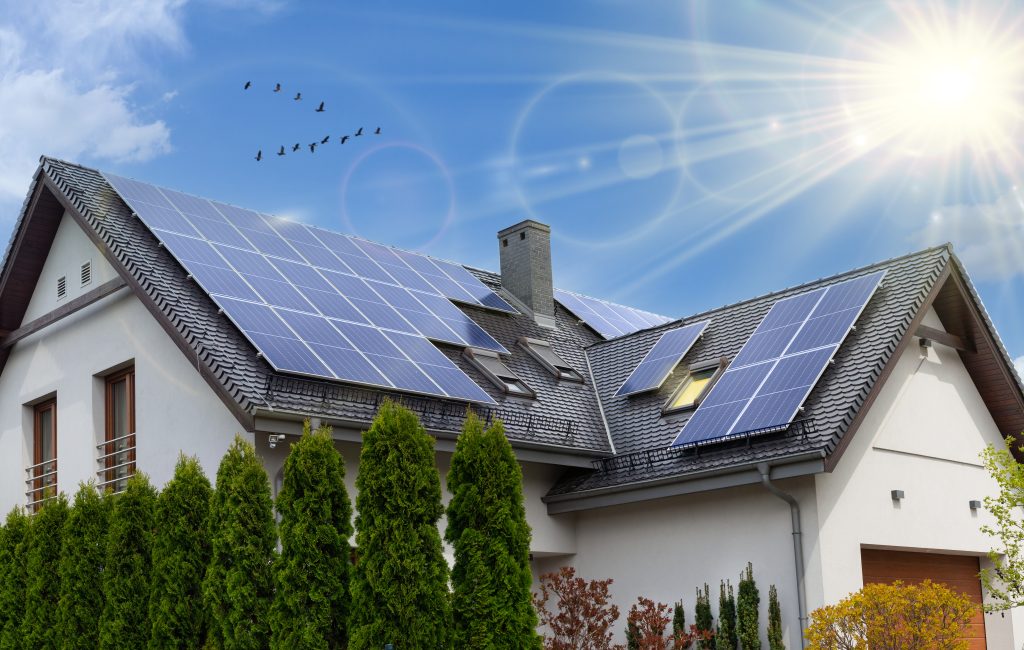
How Does Solar Energy Work?
Step 1: Capturing Sunlight
The process begins with solar panels capturing sunlight. Each panel is made up of numerous solar cells, which are constructed from semiconductive materials like silicon. These materials are specially treated to create an electric field, a critical element for directing the flow of electrons.
Step 2: Generating Direct Current (DC)
As sunlight strikes the panels, photons excite electrons in the solar cells, creating an electric current. This current flows in one direction, known as direct current (DC). While DC is suitable for certain applications, most residential and commercial electrical systems operate on alternating current (AC), requiring further conversion.
Step 3: Converting DC to AC
The DC electricity generated by the solar panels is sent to an inverter, which converts it into AC. There are several types of inverters used in solar systems, including string inverters, microinverters, and hybrid inverters. The choice of inverter depends on the system’s size, configuration, and specific requirements.
Step 4: Powering Electrical Loads
The converted AC electricity is then distributed to power electrical loads within the building. Any excess electricity generated can be stored in batteries or fed back into the electrical grid, depending on the system design.
Step 5: Monitoring and Maintenance
Modern solar systems include monitoring tools that allow electricians and system owners to track energy production, system efficiency, and potential issues. Routine maintenance, such as cleaning panels and inspecting wiring, ensures the system operates at peak performance.
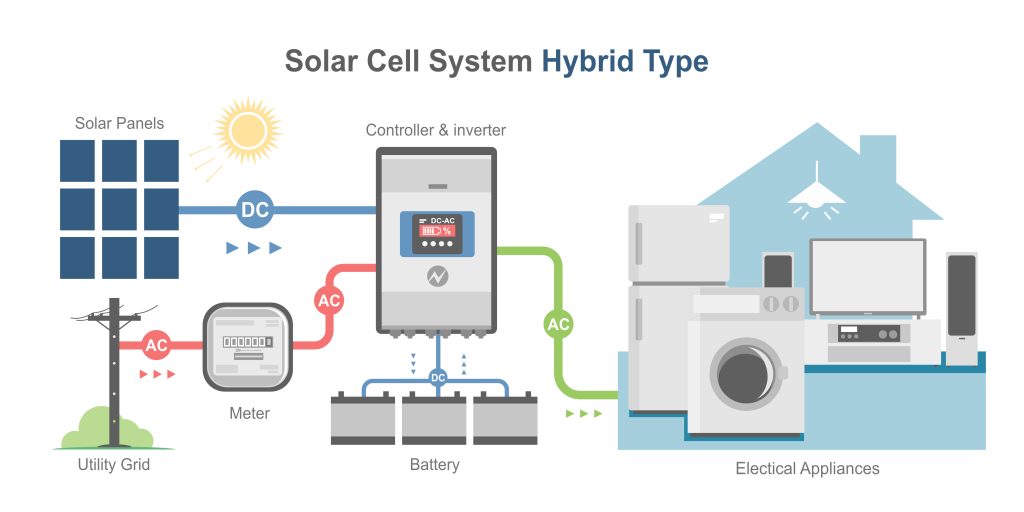
Types of Solar Energy Systems
Electricians may encounter several types of solar energy systems in their work, each with unique characteristics and applications:
1. Grid-Tied Systems
Grid-tied systems are connected to the local utility grid. They provide electricity for the building while allowing excess energy to be fed into the grid. Homeowners or businesses often receive credits for the energy they contribute, a process known as net metering.
2. Off-Grid Systems
Off-grid systems operate independently of the utility grid, relying on battery storage to provide electricity during periods of low sunlight. These systems are ideal for remote locations or applications where grid access is unavailable.
3. Hybrid Systems
Hybrid systems combine the features of grid-tied and off-grid setups. They are connected to the grid but also include battery storage for added resilience and energy independence.
Conclusion
Solar energy is transforming the electrical industry, providing electricians with new opportunities and challenges. By understanding how solar energy works and mastering the installation and maintenance of solar systems, electricians can play a vital role in advancing renewable energy adoption.

